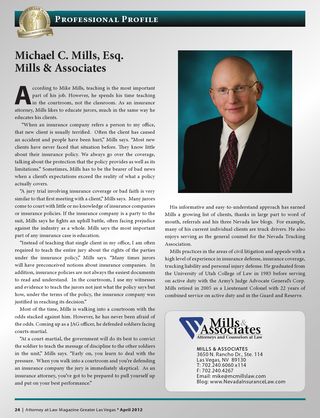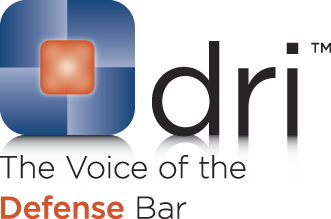 Often the terms Umbrella Insurance and Excess Insurance are used interchangeably. Is there a difference? What is it?
Often the terms Umbrella Insurance and Excess Insurance are used interchangeably. Is there a difference? What is it?
Let’s start with primary insurance. Primary insurance is the first layer of insurance. Primary insurance provides immediate coverage upon an occurrence or a loss as described by the policy. Fireman’s Fund Ins. Co. v. Md. Cas. Co., 65 Cal. App. 4th 1279, 1304, 77 Cal. Rptr. 2d 296, 311 (1998).
Primary insurers generally have the primary duty of defense. Olympic Ins. Co. v. Emp’rs Surplus Lines Ins. Co., 126 Cal. App. 3d 593, 597, 178 Cal. Rptr. 908, 910 (1981).
Excess insurance is secondary coverage. Excess insurance is meant to kick in when a predetermined amount of the primary coverage has been exhausted. Whitehead v. Fleet Towing Co. (1982), 110 Ill. App. 3d 759, 764, 442 N.E.2d 1362, 1366, 66 Ill. Dec. 449. It has been said that a true excess policy is one which is specifically intended to only come into play when the limits of the underlying coverage are exhausted. Guar. Nat’l Ins. Co. v. Am. Motorists Ins. Co., 981 F.2d 1108, 1109 (9th Cir. 1992)
Excess carriers are not responsible for the investigation, negotiation or defense of the claim. That is left to the primary carrier until those primary limits are exhausted. Frankenmuth Mut. Ins. Co. v. Cont’l Ins. Co., 450 Mich. 429, 435 n.4, 537 N.W.2d 879, 881 (1995).
While there are some similarities, an umbrella policy and a “true excess” policy are different.
In certain circumstances, an umbrella policy might function as secondary or true excess policy. Umbrella policies are written to protect an insured against catastrophic loss. It might designate an underlying primary policy and it might only come into play when the underlying policy is exhausted. Bailey v. State Farm Fire & Cas. Co., 267 Ill. App. 3d 653, 661, 205 Ill. Dec. 206, 213, 642 N.E.2d 1323, 1330 (1994).
However, an umbrella policy might also provide coverage that is broader than an excess policy. For example, an umbrella policy can provide insurance for risks that the primary policy might not cover.
Umbrella policies differ from standard excess insurance policies in that they are designed to fill gaps in coverage both vertically (by providing excess coverage) and horizontally (by providing primary coverage). See Bryan Constr. Co. v. Employers’ Surplus Lines Ins. Co., 60 N.J. 375, 290 A.2d 138, 139-40 (finding that insurance policy was “expressly called an ‘umbrella policy’ by the insurer. Its very nomenclature suggested a purpose to protect against gaps in the underlying policies and indicated more than mere excess coverage”) (N.J. Sup. Ct. 1972)
Commercial Union Ins. Co. v. Walbrook Ins. Co., 7 F.3d 1047, 1053 (1st Cir. 1993)
As succinctly stated by the Eleventh Circuit in Garmany v. Mission Insurance Co., 785 F.2d 941, 948 (11th Cir. 1986), umbrella policies have two functions: 1) to provide for a higher limit of liability for those losses typically covered by liability insurance — general liability…; [and] 2) to provide for some coverage of those less common losses not typically covered by liability insurance — e.g., malpractice liability, advertiser’s liability, blanket contractual liability, world-wide operations liability, etc.”
Am. Special Risk Ins. Co. v. A-Best Prods., 975 F. Supp. 1019, 1022 (N.D. Ohio 1997).
Where an umbrella policy covers acts as a “true excess” the costs of defense are handled the same as an excess policy. In other words, the primary covers the defense.
On the other hand, where an umbrella policy has dropped down and has become a primary policy, then it is treated like any other concurrent policy. A decision must be made as to how to pro-rate the costs of defense.
Usually, you look to the Other Insurance provisions of the primary policies. Nevada has adopted the “Lamb-Weston” rule based upon the case of Lamb-Weston, Inc. v. Oregon Auto. Ins. Co., 341 P.2d 110 (Or. 1959). That rule stands for the proposition that “the “other insurance” clause contained in one policy of insurance was null and void when it conflicts with a similar clause contained in another policy of insurance.” Travelers Ins. Co. v. Lopez, 93 Nev. 463, 468, 567 P.2d 471, 474 (1977). In that case, the Nevada Supreme Court said:
the better view favors respondent’s position that an insured is entitled to payment in full up to the policy limit, with respect to each policy under which coverage is afforded, and that “other insurance” clauses and similar clauses which purport to limit liability are void. Geyer v. Reserve Insurance Company, 447 P.2d 556 (Ariz. 1968); Sparling v. Allstate Insurance Company, 439 P.2d 616 (Or. 1968); Sellers v. United States Fidelity and Guaranty Company, 185 So.2d 689 [*469] (Fla. 1966); Bryant v. State Farm Mutual Auto. Ins. Co., 140 S.E.2d 817 (Va. 1965).
“The original reason for ‘other insurance’ clauses was to prevent overinsurance and double recovery under property and fire insurance policies. But since there is a greatly diminished risk of fraudulent claims under an automobile liability insurance policy, this original purpose of ‘other insurance’ clauses is of only limited importance.” Werley v. United Services Auto. Ass’n., 498 P.2d 112, 116-117 (Alaska 1972). “Other insurance” clauses “function solely to reduce or eliminate the insurer’s loss in the event of concurrent coverage of the same risk.” 1 [***13] If there ever was a strong rationale for the the use of “other insurance” clauses it has, on facts such as those presently before us, substantially evaporated.
Id. at 468-69, 567 P.2d at 474-75.
Please contact Mike Mills at Bauman, Loewe, Witt & Maxwell to ask about Nevada Insurance Coverage, Nevada Trucking Law or Nevada Insurance Law. He can be reached at 702.240.6060×114 and by email at mmills@blwmlawfirm.com.
 Follow
Follow Email
Email


